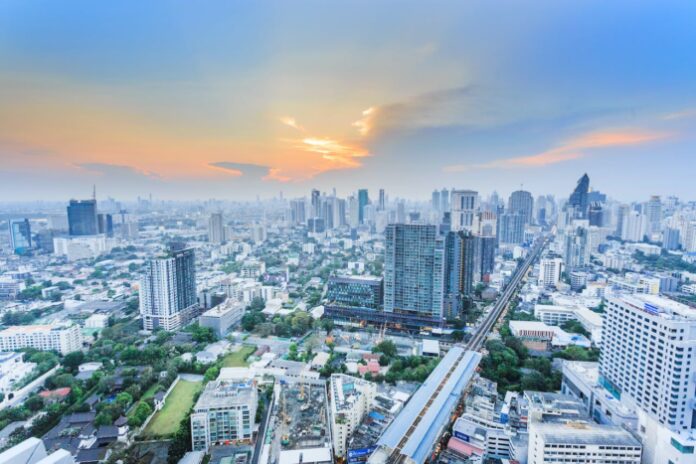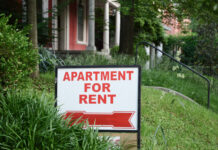Economic Integration and Its Impact on Real Estate
The establishment of the ASEAN Economic Community at the end of 2015 marked a significant milestone for member countries. This initiative has led to a harmonization of economic policies across the region, notably through the removal of trade barriers and the promotion of increased openness. This shift is not solely due to pre-arranged regional integration measures but also stems from the growing intra-ASEAN competition to draw foreign investment. The real estate sector, in particular, has emerged as a primary focus of liberalization in numerous ASEAN member states, experiencing substantial growth as a result.
Southeast Asia’s Economic Growth and Real Estate Investment Surge
From 2005 to 2014, the ASEAN real estate market attracted investments totaling US$28.19 billion, predominantly from non-regional investors. The investment climate in this sector is projected to maintain its robust growth trajectory in the coming years. This growth can be attributed to the easing of restrictions on foreign investors and the increased purchasing power of the region’s burgeoning middle class. Countries like Vietnam, Indonesia, and Cambodia are at the forefront, implementing reforms to facilitate foreign participation in their real estate markets, thereby unveiling a plethora of investment opportunities.
Southeast Asia’s real estate market is currently experiencing a significant boom, driven by robust economic growth and a surge in consumerism. This uptrend presents a lucrative opportunity for investors looking to tap into the region’s burgeoning property market.
Challenges in the ASEAN Real Estate Landscape
Despite the promising outlook, investing in ASEAN’s real estate market is not without its challenges. One significant hurdle is the presence of stringent land ownership laws in many member countries. These laws often include limitations on land tenure duration and impose restrictions on the renewal and re-leasing of land. Furthermore, with many parts of the region experiencing rapid urbanization and facing challenges related to infrastructure, governments are tasked with a delicate balancing act. They must attract foreign capital while simultaneously ensuring the availability of affordable housing for their citizens. This complex dynamic presents a unique set of considerations for potential investors in the ASEAN real estate market.
Key Investment Hotspots in Southeast Asia
When considering real estate investment in Southeast Asia, key urban areas such as Metro Manila, Bangkok, and Jakarta stand out as prime hotspots. These cities are at the forefront of the region’s economic expansion and offer diverse opportunities in the real estate sector.
Metro Manila, Philippines: A Hub for Luxury Real Estate
In the heart of the Philippines, Metro Manila emerges as a prime location for real estate investment, particularly in the thriving sectors of Taguig, Makati, and Pasay. The city’s rapid urbanization has led to a heightened demand for real estate, with Taguig being especially notable for its luxurious apartment offerings. These apartments, catering to expatriates and affluent Filipinos, present a unique opportunity for investment in high-end living spaces. The economic vibrancy of Manila, combined with the increasing demand for luxury accommodations, makes this an opportune time for investing in this dynamic real estate market.
Bangkok, Thailand: A Tourist Haven with Growing Demand
Bangkok, Thailand has been experiencing significant growth, making it a focal point for real estate investors. Areas like Sukhumvit and Sathorn are witnessing an increase in interest for real estate, particularly residential properties. The city’s appeal to millions of tourists annually contributes to the high valuation of properties in these areas.
Jakarta, Indonesia: Rapid Growth in the Construction Sector
In Indonesia’s bustling capital, Jakarta, the construction sector is booming, presenting numerous new projects and investment opportunities. Areas such as Kemang, Menteng, and Sudirman are experiencing heightened demand for both residential and commercial real estate, making them attractive destinations for investment.
Types of Properties for Investment
The most sought-after property types for investment in this region encompass residential, commercial, industrial, and mixed-use properties. Each category offers unique advantages and caters to different aspects of Southeast Asia’s rapidly growing economy and demographic shifts.
Investment Considerations and Critical Factors
Several critical factors should be evaluated when investing in Southeast Asia’s real estate industry. These include the current economic conditions, political stability, demographic trends, and the state of infrastructure in the region. These elements play a pivotal role in determining the potential success and sustainability of real estate investments.
Economic Conditions: A Key Indicator
Understanding the region’s economic conditions is essential when considering an investment in Southeast Asia’s real estate market. The region has witnessed significant economic growth, which directly correlates with robust real estate demand. Good economic conditions and the expansion of the middle-class population are pivotal indicators for investors. The consistent increase in Southeast Asia’s GDP growth rate is a promising sign, signaling a healthy environment for real estate investments.
Political Stability: Ensuring a Secure Investment Climate
Political stability is another crucial factor in real estate investment in Southeast Asia. A country with a stable political environment typically offers a more secure investment climate. Investors are naturally inclined to put their resources in nations where political stability minimizes the risks affiliated with property investments.
Demographics and Market Demand: Understanding Population Trends
The region’s demographics, particularly its population density and market demand, are significant considerations for real estate investment. The burgeoning population in some of Southeast Asia’s most prosperous cities is leading to an escalated demand for housing, reflecting the need for residential developments to accommodate this growth.
Infrastructure and Accessibility: The Backbone of Economic Growth
When investing in Southeast Asia, the quality of infrastructure and accessibility is crucial. The development of roads, airports, and ports is integral to the economic growth of a nation, as it facilitates the smooth movement of goods and services. This, in turn, can have a profound impact on the real estate market.
Navigating Legal and Regulatory Frameworks
Prior to investing, it is crucial for investors to thoroughly understand the foreign ownership restrictions, taxation laws, and regulatory frameworks specific to each Southeast Asian country. This knowledge is essential for making informed decisions and navigating the complex legal landscape of the region.
Foreign Ownership Restrictions: Complying with Local Laws
It is imperative to understand and adhere to foreign ownership restrictions when investing in Southeast Asia’s real estate market. Some countries in the region have specific restrictions on foreign ownership, particularly for properties considered critical to national development. Thorough research and compliance with these laws are essential.
Taxation Laws and Regulations: A Critical Aspect of Investment
Taxation laws and regulations vary across Southeast Asian countries. It is advisable not to rush into investments without a clear understanding of the tax implications. There are varying tax rates, depending on the property type and its location. Consulting with tax experts to fully understand the taxation system of the country where you plan to invest is highly recommended.
The Promising Future of Southeast Asian Real Estate
With its strong economic trajectory, significant infrastructure investments, and rising consumer demand, Southeast Asia is a region that should not be overlooked by real estate investors. The region’s real estate sector is not only thriving but is also showing signs of sustained growth. Reports, including one by PwC, forecast that the Asia-Pacific region will become the wealthiest globally by 2021, boasting a total wealth of $75 trillion. This economic milestone will further fuel the demand for real estate, offering promising prospects for high returns on investment.
This overview delves into the vibrant real estate market of Southeast Asia, highlighting investment hotspots, property types, and the essential considerations for prospective investors.
Diverse Real Estate Investment Opportunities
Residential Properties: A Popular Choice
Residential properties are the most sought-after investment type in Southeast Asia, largely due to the region’s growing middle class. The appeal of residential properties lies in their potential to provide regular income through rental yields or capital appreciation, making them a reliable investment choice.
Commercial Properties: Lucrative Returns
Investing in commercial properties, such as office spaces, retail locations, and hotels, offers substantial returns in Southeast Asia. A prime example of this is The Chuan Park, which showcases the potential of commercial real estate in the region. These properties typically generate a steady income stream and are an attractive option for investors seeking long-term profitability. Their sustained demand underscores the robust opportunities available in the Southeast Asian market.
Industrial Properties: Rising Demand
The surge in manufacturing activities across Southeast Asia, particularly in Vietnam and Indonesia, has led to an increased demand for industrial properties. These properties offer the dual benefit of regular income through rentals and the potential for capital growth.
Mixed-use Properties: A Diversified Investment
Mixed-use properties, which amalgamate residential, commercial, and industrial spaces, offer a unique opportunity for investment diversification. An excellent example of this is The Chuan Park Show Flat, where the blend of various property types within one development showcases the potential for steady income flow. The strategic combination of different property types within a single investment not only ensures a steady income flow but also reduces investment risk by spreading it across various sectors. This approach exemplifies the advantages of mixed-use property investments in today’s market.
Conclusion
In conclusion, Southeast Asia’s real estate market presents numerous opportunities for savvy investors. However, it is imperative to thoroughly consider factors such as economic conditions, political stability, demographics, infrastructure, and the legal and regulatory framework before proceeding with investments. With the right research and a deep understanding of the market dynamics, investors can fully capitalize on the region’s potential, diversifying their portfolios and securing high returns in this rapidly evolving market.
Find a Home-Based Business to Start-Up >>> Hundreds of Business Listings.

















































